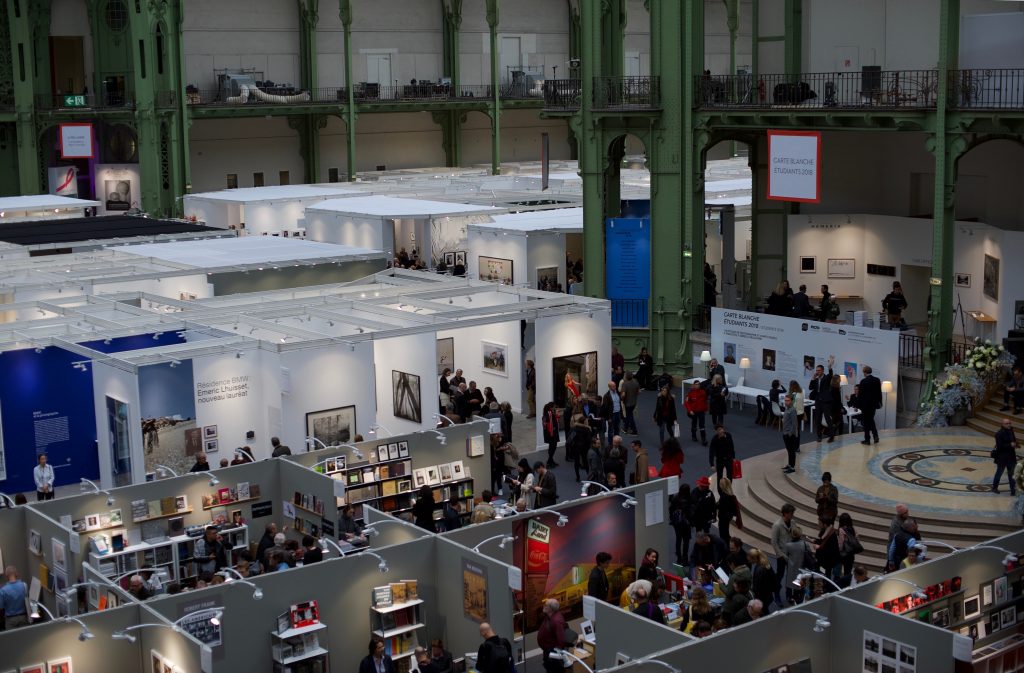Art Paris Art Fair 2013
Identity obscuring portraits, “Half Drags” and lost-and-found family trees in our look at the contemporary fair
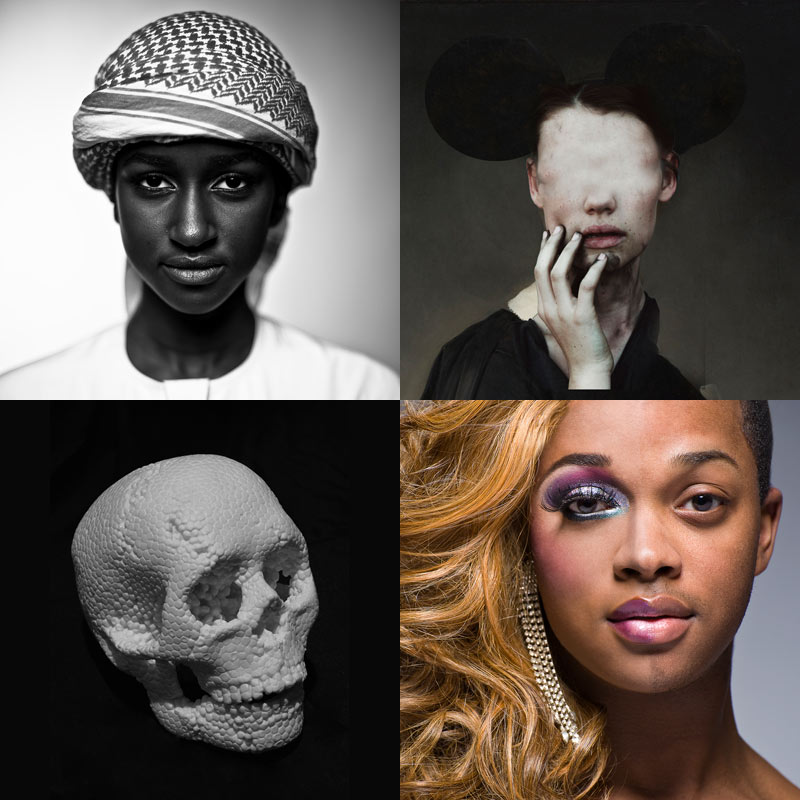
Held at the beautifully historic Grand Palais, the 2013 edition of the Art Paris Art Fair seemed fixated on distorting reference points, by playing with illusions and optical tricks. Among the group of 144 international galleries we encountered work featuring blurred, masked and obstructed faces in generally uncomfortable settings, giving off a disorienting and macabre vibe throughout.

Aurore Valade
Italian gallery Gagliardi Art System presented a body of work illustrating the tendency toward the disturbing. Aurore Valade‘s hyperrealistic family photos, though sharply and neatly presented, depict warped scenes that immediately leave the viewer ill at ease. By playing with age inversions—putting elderly masks on kids and making the old people pose as children—the artist displays disturbing details in perfect still-life scenarios, possibly suggesting a way our old ideas disrupt our progressive and modern mentalities.
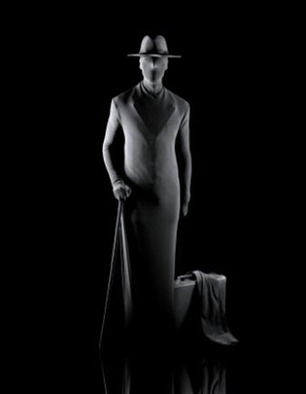
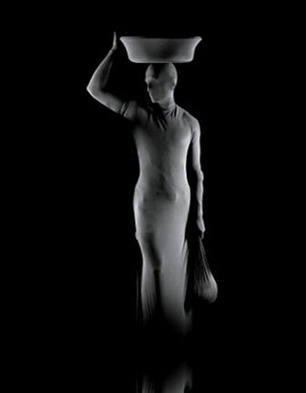
J&Peg
Multimedia artistic duo J&Peg‘s photographic series of standing portraits wrap people in everyday outfits—men in formalwear, women coming from the market with bags at hand and basins on their heads—in nylon casings. The form-fitting mask renders it impossible to distinguish the character’s face, and thus their origin as well, sheathing subjects in ambiguity and leaving it up to their accessories to determine their probable condition.

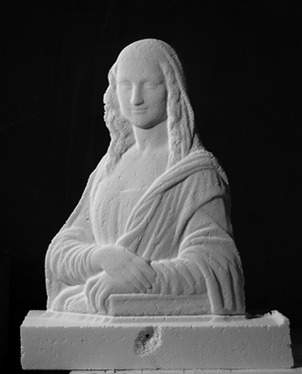
Fabio Viale
The theme of illusion and misdirection continues with Fabio Viale‘s Mona Lisa and skull sculptures. Made to play with optical perception, even the works’ materials play a part in the trick. Seemingly made of dotted styrofoam, each piece is actually carved of pure marble, worked to resemble the lightweight packing material. The switch successfully inverts our common perception of imitation of a poor, ersatz material made to resemble a finer one.
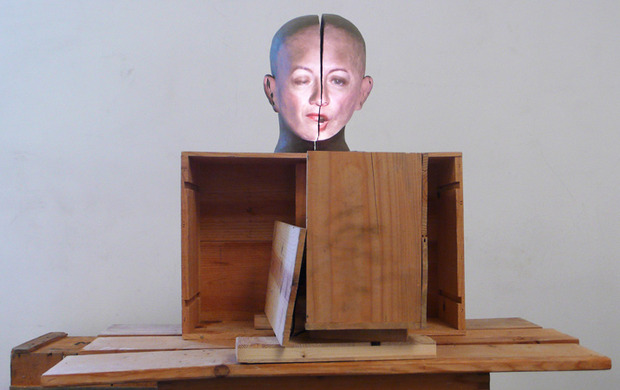
Glaser Kunz
Part of his “Cinematographic Sculptures, Talking Heads,” Glaser Kunz‘s Franziska installation takes its title quite literally with a double video projection of a face split in two. Each side of the automated projection appears, dramatically, to try synchronizing the speaking, but the slight gap between the two parts persists, never letting the left make a smooth image with the right.
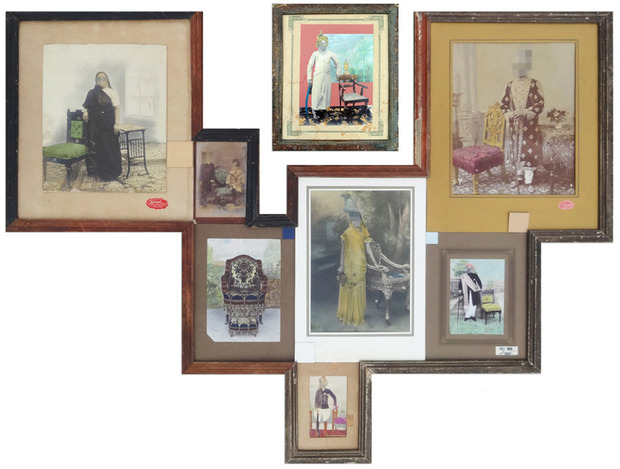
Nandan Ghiya
Parisian gallery Paris-Beijing presented the “Family Tree 2.0” series by Indian artist Nandan Ghiya. Consisting of collages of vintage, colonial-era portraits in altered frames, the individual works feature faces obscured by a black stripe or blurred by pixelation. They form imaginary trees of life—false ancestral lines if you will. Not only has time lost track of these nameless people, their achievements in life, personal destinies and stories, but the artist has erased their faces and mixed them in with strange communities as well. The recycling of subjects and reconstituting relationships could be seen as somewhat of a parody of the arborescence of social networks.
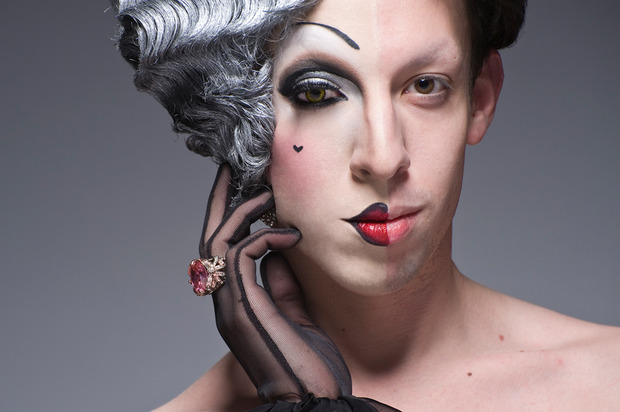
Leland Bobbé
The Empty Quarter, Dubai’s only fine art photography gallery, presented a series of deeply intriguing portraits by American Leland Bobbé. “Half Drags” captures the contrasting faces of men who often dress in drag. On one side they sport their natural look, on the other their made-up face and elaborate wigs—uniting their male and female identities into one.
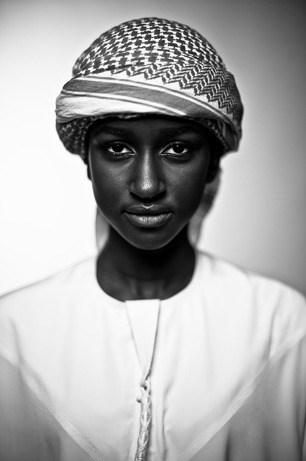
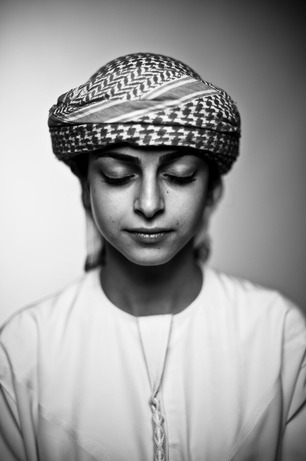
Al-Mutasim Al-Maskery
The Empty Quarter also gave us the rare occasion to see the work of Omani artist Al-Mutasim Al-Maskery, who works with gender identity as well. His series of portraits of young Omani women wearing keffiyeh turbans is unsettling in its ambiguity. The delicate, head-on lighting and traditional headwear create the illusion of androgyny and confuse the viewer as to whether the subject is boy or girl.

Tor Seidel
German artist Tor Seidel‘s non-portraits hide the subject almost entirely. By shrouding the body in darkness, allowing only a pair of legs to emerge out of the black, the artists aims to show human emotions without the obvious use of facial expressions.
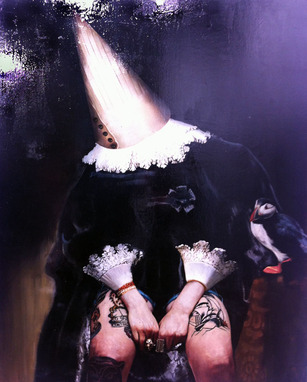
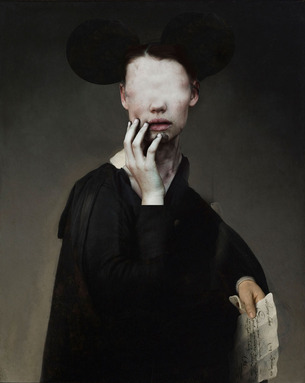
Igor Skaletsky
Rounding out the portrait-driven arts are the disturbing oil paintings by the young Russian artist Igor Skaletsky, presented by France’s Alfa Galerie. The full portrait paintings in the “Deviations” series feature erased or hidden faces, with a subversive strength drawing on the use of the purest Flemish Golden Age painting style and composition. Contrasting against the paintings’ perfectly executed era specific style, Skaletsky incorporates Mickey Mouse ears or even reveals the tattooed legs of a noble Flemish clergy members to bring new meaning to the otherwise archaic paintings.
Images courtesy of their respective galleries
